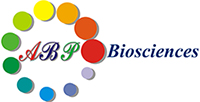Hoechst 33258 is a popular cell membrane-permeant nuclear counterstain. Hoechst 33258 emits blue fluorescence upon binding to the minor groove of dsDNA. Hoechst 33258 are widely used for nuclear counterstaining, apoptosis and cell cycle studies. Hoechst 33258 is provided as a 10 mg solid (C003) and a 10 mg/mL aqueous solution (C004).
| Specifications: | |
| Excitation/Emission: | 352/461 nm |
| Shipping Condition: | Ambient |
| Storage Conditions: | -20ºC, protect from light |
| Molecular Formula: | C25H37Cl3N6O6 |
| Molecular Weight: | 623.96 |
| CAS Number: | 23491-45-4 |
| Protocol (PDF): | C003 | C004 |
| MSDS (PDF): | C003 | C004 |
| COA (PDF): | C003 | C004 |
Reference:
PLoS Genet (2012) 8:e1002574-e1002574
J Biol Chem (2013) 288:6743-6753
J Cell Biol (1992) 116:147-156
Frequently Asked Questions (FAQs)
Can I use Hoechst™ dyes to do both DNA quantitation and cell number counting in plates?
Yes, this can be done in a 96-well plate-based format. Hoechst™ dyes will label all cells, live or dead (or even fixed). If doing DNA quantitation, you would also have a row of known DNA concentrations to make a standard curve to compare against, up to 10 μg/mL.
I have a mix of live bacteria and platelet cells, and I need to be able to separate out the bacteria. Do you have a suggestion?
Platelet cells don't have a nucleus and thus lack nuclear DNA. Therefore, a cell-permeant, DNA-selective dye would label bacteria with greater intensity relative to minor staining of the platelet mitochondrial DNA. We recommend using a Hoechst nucleic acid stain.

